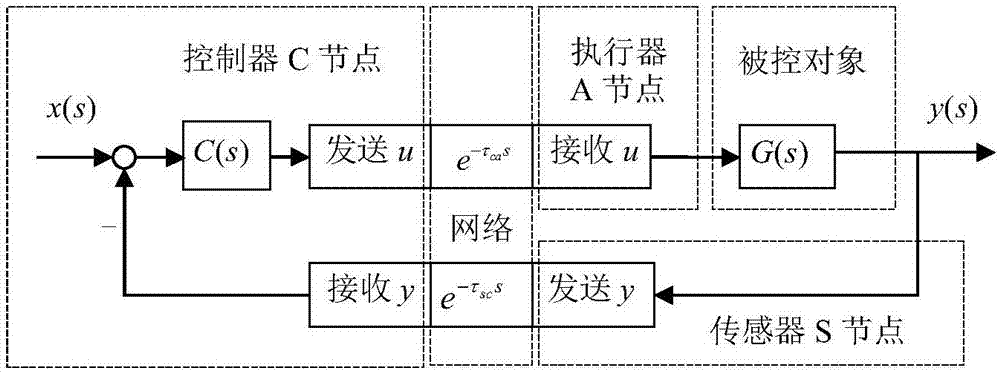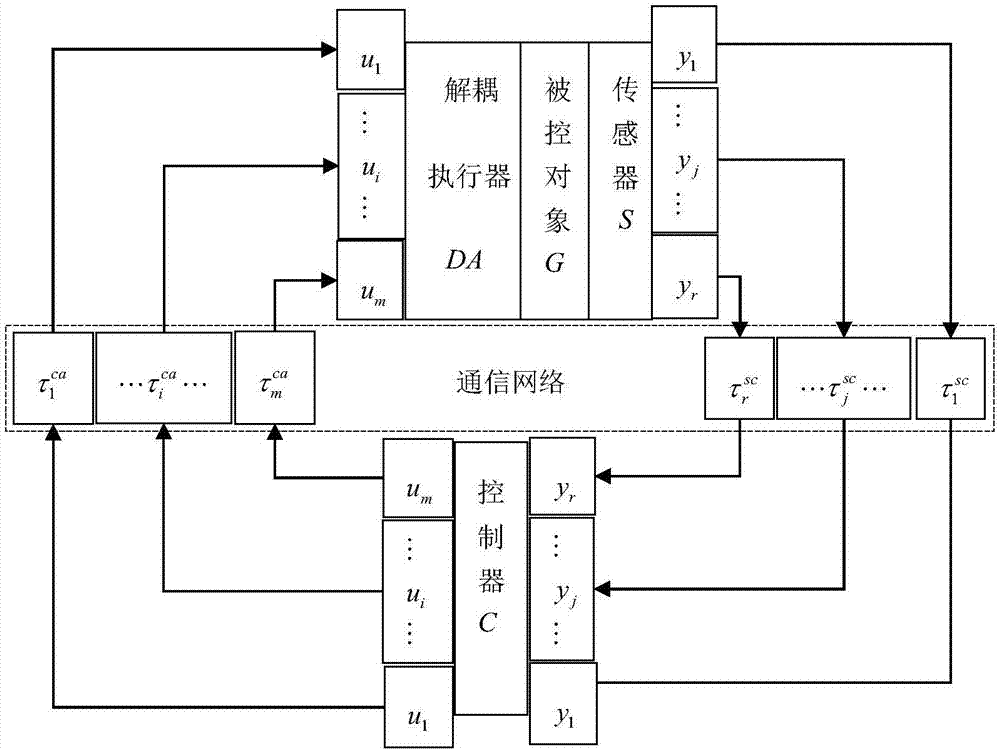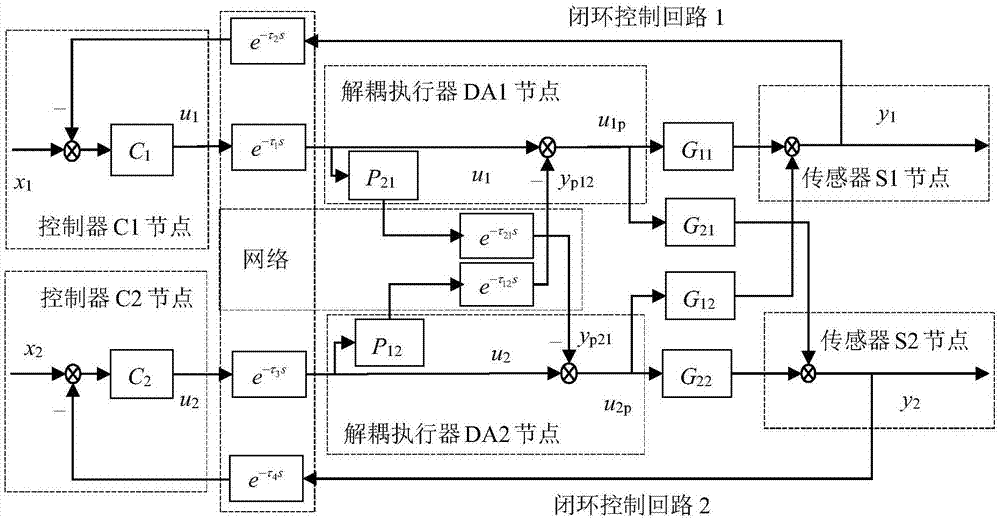IMC and PSC method of random time delay of TITO (Two-input and Two-output) NDCS
A random-delay, dual-input technology, applied in instruments, adaptive control, control/regulation systems, etc., can solve the problems of system performance degradation, complex influence, and many uncertain factors.
- Summary
- Abstract
- Description
- Claims
- Application Information
AI Technical Summary
Problems solved by technology
Method used
Image
Examples
Embodiment Construction
[0145] The following will refer to the attached Figure 5 Exemplary embodiments of the present invention are described in detail to make the above-mentioned features and advantages of the present invention more apparent to those skilled in the art.
[0146] The specific implementation steps are as follows:
[0147] For closed loop control loop 1:
[0148] Step 1: The sensor S1 node works in the time-driven mode, when the sensor S1 node is cycled for h 1 After the sampling signal of is triggered, the controlled object G 11 (s) output signal y 11 (s) and the controlled object cross-channel transfer function G 12 (s) output signal y 12 (s), and the output signal y of the decoupled actuator DA1 node 11mb (s) Sampling and calculating the system output signal y of the closed-loop control loop 1 1 (s) and the feedback signal y 1b (s), and y 1 (s)=y 11 (s)+y 12 (s) and y 1b (s)=y 1 (s)-y 11mb (s);
[0149] Step 2: The sensor S1 node will feed back the signal y 1b (s), ...
PUM
 Login to View More
Login to View More Abstract
Description
Claims
Application Information
 Login to View More
Login to View More - R&D
- Intellectual Property
- Life Sciences
- Materials
- Tech Scout
- Unparalleled Data Quality
- Higher Quality Content
- 60% Fewer Hallucinations
Browse by: Latest US Patents, China's latest patents, Technical Efficacy Thesaurus, Application Domain, Technology Topic, Popular Technical Reports.
© 2025 PatSnap. All rights reserved.Legal|Privacy policy|Modern Slavery Act Transparency Statement|Sitemap|About US| Contact US: help@patsnap.com



